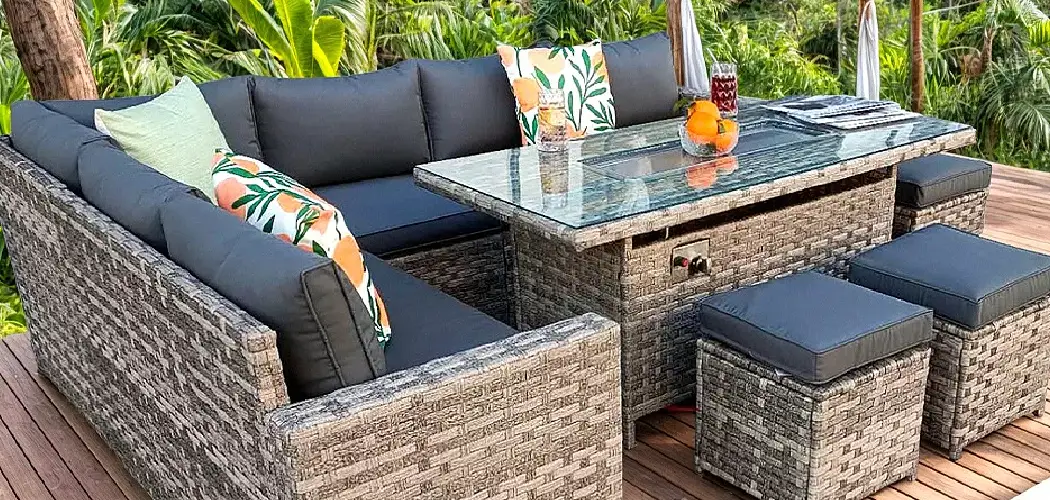Cane furniture is a popular choice for outdoor spaces due to its natural beauty and timeless appeal. However, exposure to the elements such as sunlight, rain, and humidity can take a toll on its durability and appearance. Proper care and maintenance are essential to ensure that your cane furniture remains in good condition for years to come.
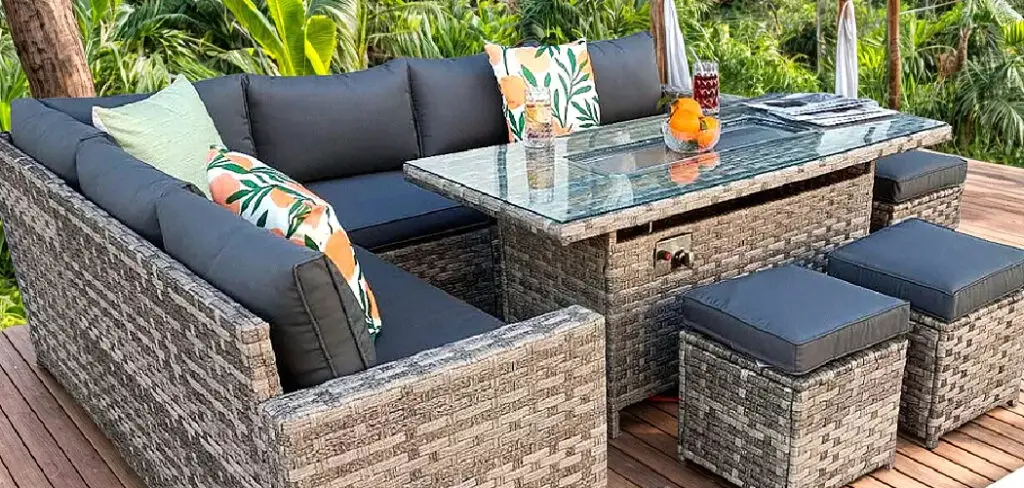
This guide will provide you with practical tips for how to protect cane furniture outside.
What is Cane Furniture?
Cane furniture is crafted using the outer bark of the rattan vine, a strong and flexible material commonly found in tropical regions. The cane is woven into intricate patterns to create lightweight yet durable pieces, such as chairs, sofas, and tables. Known for its natural aesthetic, cane furniture embodies a rustic charm that complements both indoor and outdoor spaces. It has been used for centuries due to its versatility, resilience, and eco-friendly properties, as the harvesting of rattan vines has a minimal environmental impact.
Is Cane Furniture Suitable for Outdoor Use
Cane furniture can be a great choice for outdoor use, but it does require proper care and maintenance to ensure its longevity. While the natural rattan used in cane furniture is durable and resilient, it is not inherently weatherproof. Prolonged exposure to sunlight, rain, or humidity can weaken the fibers, leading to wear and tear over time.
To enhance its suitability for outdoor settings, it is often recommended to treat cane furniture with protective finishes or use weather-resistant cushions and covers.
Additionally, placing it in covered or shaded areas, such as patios or pergolas, can help shield it from harsh environmental elements. With the right precautions, cane furniture can add a touch of elegance and comfort to your outdoor spaces while maintaining its durability.
10 Methods How to Protect Cane Furniture outside
1. Apply a Weather-Resistant Sealant to Shield Against Moisture
One of the most important steps in protecting cane furniture for outdoor use is applying a weather-resistant sealant. Cane, a natural material made from rattan or similar vines, is porous and vulnerable to water absorption. Without treatment, moisture can seep into the fibers, leading to swelling, warping, mildew, or rot.
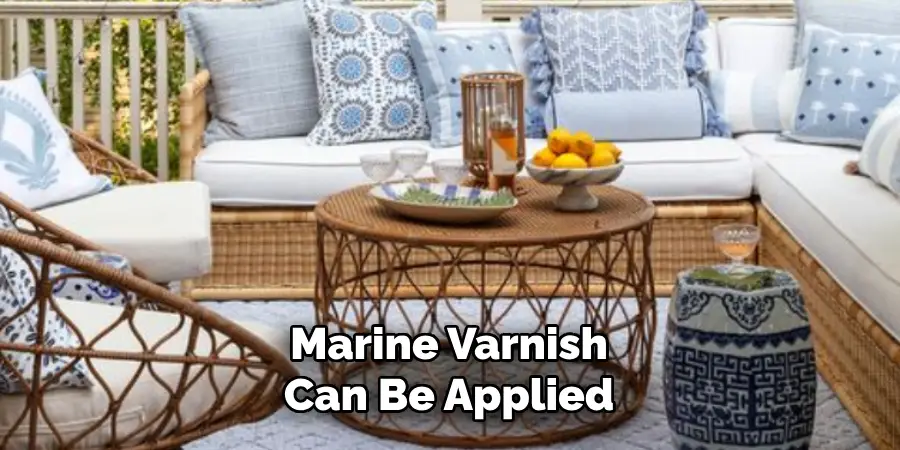
A clear outdoor-grade polyurethane, lacquer, or marine varnish can be applied with a brush to create a waterproof barrier. Make sure to apply thin, even coats and allow each layer to dry thoroughly before adding the next. This not only protects against rain and humidity but also strengthens the structure against general wear.
2. Keep Cane Furniture Under a Covered Patio or Pergola
Direct exposure to sun and rain can drastically reduce the life of cane furniture. One of the most effective ways to protect it is to position it under a covered area such as a porch, pergola, or gazebo. Even a large patio umbrella can provide some degree of protection.
This overhead coverage shields the furniture from the harshest elements—UV rays, downpours, and even bird droppings. Cane may look delicate, but when kept away from direct exposure, it can withstand outdoor conditions for years. Adding protection from above also helps prevent fading and brittleness caused by UV degradation.
3. Elevate Furniture from Wet Ground Surfaces
Placing cane furniture directly on damp ground, grass, or unsealed decks can cause the legs to absorb moisture from below, even when the rest of the furniture is shielded. To avoid this, always elevate cane furniture slightly above ground level.
This can be done by adding small rubber or plastic leg caps, using furniture risers, or simply positioning the furniture on rugs, pavers, or sealed tiles. Ensuring air circulation beneath the furniture helps the cane dry out quickly after rain and prevents long-term water damage that typically starts from the legs upward.
4. Use Protective Covers When Not in Use
Investing in high-quality outdoor furniture covers is a smart way to prolong the life of cane pieces. These covers, typically made from UV-resistant and waterproof materials, can be draped over furniture when it’s not in use to shield it from rain, dust, and sunlight.
Look for breathable covers that prevent condensation buildup underneath, which can cause mildew. Make sure the covers fit properly—not too tight to avoid stress on the frame, and not too loose to prevent wind from whipping them away. Covering cane furniture overnight or during wet seasons provides essential protection between uses.
5. Bring Cane Indoors During Extreme Weather
While cane can handle light outdoor exposure with proper protection, it’s best to bring it indoors during extreme conditions. This includes heavy rainstorms, snow, prolonged cold snaps, or heatwaves.
If you live in a region with seasonal weather changes, consider treating cane furniture as seasonal decor—used during fair months and stored during harsh ones.
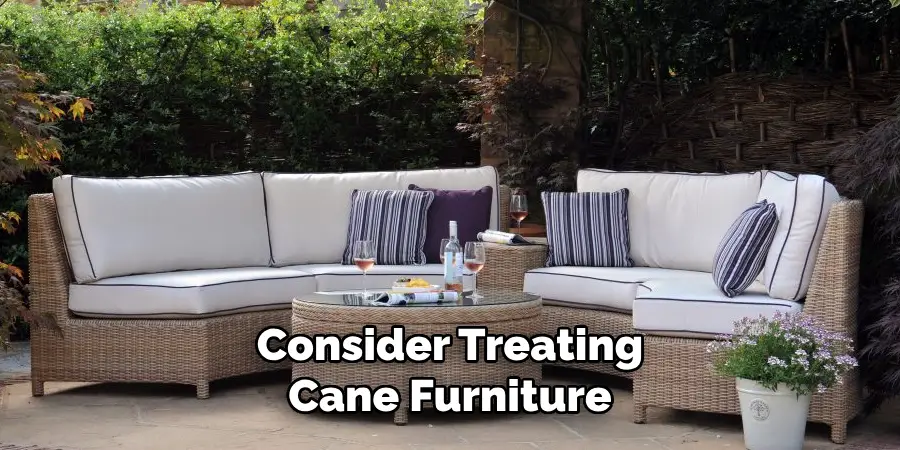
Even a temporary move into a garage, shed, or sunroom during storms can make a huge difference in preserving the piece.
This extra step may take a little effort, but it drastically reduces the risk of irreversible damage.
6. Clean Regularly with Gentle Techniques to Prevent Buildup
Outdoor environments expose cane furniture to dirt, pollen, bird droppings, and mildew. Regular cleaning prevents buildup that can degrade the fibers over time. Use a soft-bristled brush or vacuum with a brush attachment to remove surface debris weekly. For deeper cleaning, wipe the cane with a soft cloth dampened with a solution of mild soap and water. Avoid soaking or hosing it down, as too much moisture can weaken the fibers. After cleaning, always let the furniture dry fully in a well-ventilated area before using or covering it. Gentle maintenance goes a long way in keeping cane vibrant and resilient.
7. Treat with Linseed or Tung Oil for Natural Moisture Resistance
In addition to synthetic sealants, you can enhance your cane furniture’s water resistance with natural oils such as boiled linseed oil or tung oil. These oils penetrate the cane, helping it stay supple and forming a mild barrier against moisture.
They also nourish the natural fibers, preventing cracking and brittleness from sun exposure. Apply the oil with a soft cloth or brush, wipe off excess after 15–20 minutes, and allow it to cure. This method is ideal for those who prefer a more natural finish and want to maintain the authentic look of the cane.
8. Rotate and Reposition Furniture Periodically
Over time, uneven exposure to sunlight and rain can cause discoloration or warping in specific areas of cane furniture. To minimize this, rotate and reposition your furniture periodically—especially if it’s placed in partial shade or receives uneven light.
Moving the pieces a few feet in either direction or turning them 180 degrees every few weeks ensures even weathering and helps the cane wear uniformly. This small adjustment helps prevent sun-faded patches, sagging seats, or uneven drying, contributing to a longer lifespan for your outdoor furniture.
9. Avoid Excessive Weight or Stress on Cane Surfaces
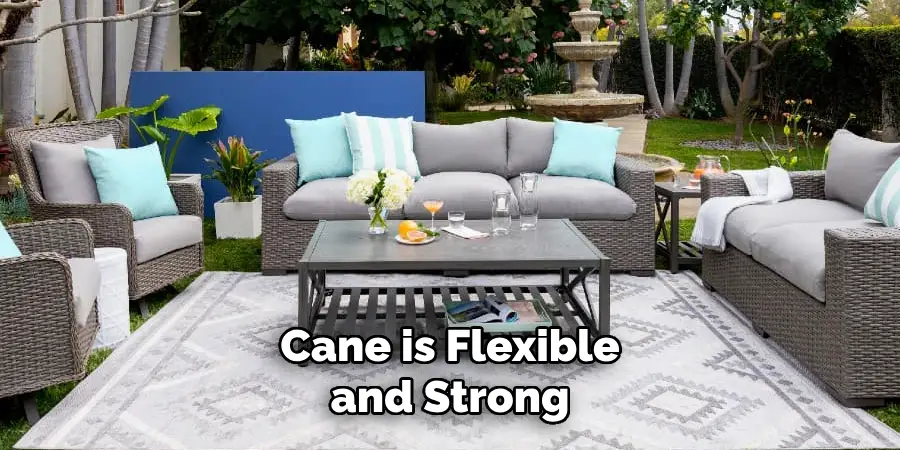
Cane is flexible and strong, but it has its limits—especially when exposed to moisture or heat, which can soften or weaken it temporarily. Avoid standing or placing heavy objects on cane furniture, particularly on seats or arms where pressure tends to concentrate. Over time, weight stress can cause the cane weave to sag or split.
Encourage proper use, and if you need to reinforce seating, consider adding a cushion or insert that helps distribute body weight more evenly. Preventing overloading is a preventative measure as much as a protective one.
10. Re-coat and Inspect Annually for Long-Term Durability
Even the best-protected cane furniture requires occasional renewal. Make it a habit to inspect your outdoor cane pieces at least once a year. Check for signs of wear, fading, mold, or loose weaves. Clean the piece thoroughly and reapply a fresh coat of sealant or oil as needed. Touch up any exposed areas, especially on joints or bent frames. Regular inspection helps catch issues early—before a small crack turns into a broken strand or before mold stains spread. With this annual routine, your cane furniture can serve beautifully outside for many seasons.
Maintenance and Upkeep
Proper maintenance and upkeep are crucial to extending the life of your cane furniture and keeping it looking its best. Beyond annual inspections, routine cleaning is essential.
Wipe your furniture down regularly with a damp cloth to remove dust, dirt, and debris that can accumulate from outdoor exposure. Use a mild soap solution for deeper cleaning as needed, but avoid soaking the cane as excess moisture can weaken the fibers over time.
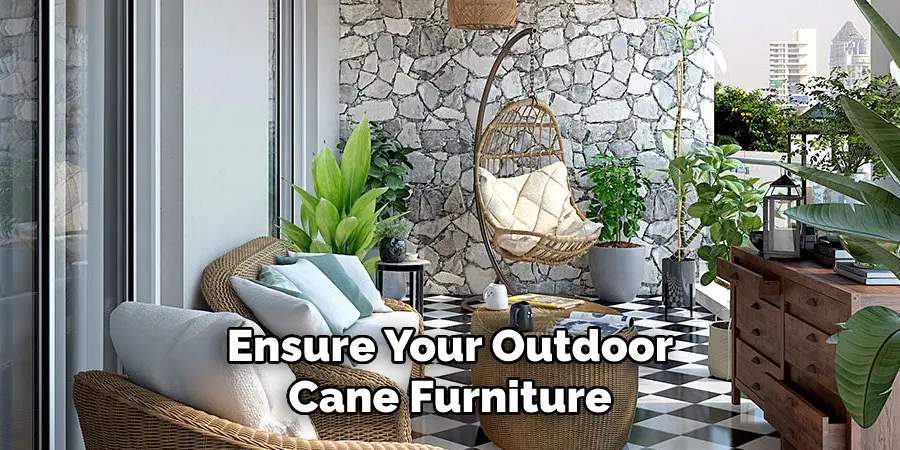
Always allow it to dry completely after cleaning. Additionally, consider storing your cane furniture indoors or using protective covers during harsh weather conditions, such as heavy rain or intense sun, to prevent unnecessary wear. Paying attention to these details will ensure your outdoor cane furniture remains both functional and aesthetically pleasing for years to come.
Conclusion
Cane furniture brings a charming, natural aesthetic to outdoor spaces, but it does require thoughtful care to maintain its beauty and integrity. By combining protective measures—like sealing, covering, cleaning, and strategic placement—you can enjoy your cane furniture in the garden or patio without fear of premature deterioration. Thanks for reading, and we hope this has given you some inspiration on how to protect cane furniture outside!

